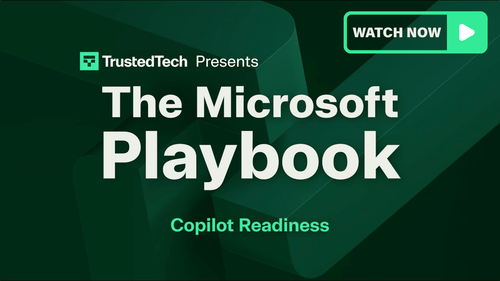Online threats can strike from anywhere, and protecting your environment is ongoing. Microsoft continues to expose high-impact threats, including AiTM (Adversary-in-The-Middle) phishing campaigns and nation-state actors like Star Blizzard that specifically target sensitive organizations. In this post, we’ll explore what Microsoft Defender for Office 365 is, why it’s essential for modern businesses, and how to leverage Microsoft 365 Defender to safeguard your users against phishing, BEC (Business Email Compromise), and other advanced attacks.
The Threat Landscape: AiTM & Star Blizzard
Even with multi-factor authentication (MFA), AiTM phishing attacks can hijack user sessions and steal credentials by intercepting authentication tokens. These stolen tokens are often used in business email compromise (BEC) scams to impersonate executives and divert funds. Attackers have grown adept at bypassing traditional defenses, for example, inserting login pages between a user and the real site to capture MFA codes in real time.
Meanwhile, Star Blizzard (a Russia-linked cyber-espionage group) has aggressively targeted Western organizations. Since 2022, Star Blizzard’s spear-phishing campaigns have hit more than 30 organizations in NATO countries, focusing on think tanks, defense contractors, academic institutions, and NGOs. This showcases how persistent and targeted modern cyber threats have become. Star Blizzard is known for long-term phishing operations to exfiltrate sensitive data and undermine democratic processes.
What’s New: Attackers are innovating. Some now leverage AI tools to craft convincing phishing lures or even use email QR codes to bypass URL scanners (knowing a user might scan the code with an unmanaged phone). Microsoft’s security research teams have detected a surge in QR-based phishing, prompting new defenses and training modules to address this vector.
What Is Microsoft Defender for Office 365?
Microsoft Defender for Office 365 is part of the broader Microsoft 365 Defender suite and is a specialized shield for your IT ecosystem. It helps protect users against threats in email, links, attachments, and collaboration platforms (like Teams and SharePoint). Key features include Safe Links, Safe Attachments, anti-phishing policies, and real-time detection of malicious activity.
In practical terms, Defender for Office 365 acts as an always-on security layer that checks content before it reaches the inbox or chat. For example, if someone sends an email with a suspicious URL, Safe Links will dynamically analyze and detonate that link when clicked – blocking access if it’s malicious. Similarly, Safe Attachments will open attachments in a sandbox to detect malware, and anti-phishing AI will flag messages that look like impersonation of your users or partners.
Whether you're combating credential theft attempts or targeted spear-phishing, Microsoft 365 Defender provides multi-layered, AI-powered defenses across your organization's endpoints, identities, and cloud apps.

Why Is Microsoft 365 Defender Important?
Modern cyber threats require modern solutions. Here’s why implementing Microsoft Defender for Microsoft 365 (and the rest of the Defender suite) is a smart move for your business:
Email Is Still the #1 Attack Vector
Despite years of user training and spam filtering, email remains the easiest path for attackers. Microsoft Defender for Office 365 significantly improves the detection of:
- Phishing attempts – Identifies and blocks emails that trick users into entering credentials.
- Business Email Compromise (BEC) – Uses advanced AI (including language models) to catch subtle impersonation attempts that might evade traditional filters.
- Malicious attachments/URLs—Scans attachments and links in real time. In today's landscape, even an innocent-looking PDF or a QR code can hide danger.
Advanced Threat Protection, Built In
With features like Safe Links and Safe Attachments, Microsoft Defender for Office 365 inspects content before it reaches end users. This proactive filtering is essential to stop threats before they’re clicked. For instance, a user might receive a PDF containing only a QR code; Defender’s cloud-based scanner can detect if that code would lead to a known phishing site. Moreover, the premium Plan 2 of Defender for Office 365 includes Attack Simulation Training, which lets you simulate real-world attacks (phishing emails, credential harvest attempts, even QR code phishing scenarios) in a safe environment. This helps continually train employees to recognize and report new phishing techniques, reinforcing your human firewall with hands-on practice.
AI-Powered, LLM-Based Threat Detection
Microsoft is at the cutting edge of security AI. The Defender suite now leverages large language models (LLMs) and advanced machine learning to analyze emails and collaboration content for signs of attack. This means Defender can understand context and intent, not just malicious links. For example, in 2024, Microsoft rolled out an LLM-based system to detect BEC scams by reading the email’s language and inferring if the sender is attempting fraud or impersonation. This has dramatically improved the detection of sophisticated attacks with no obvious malicious link or attachment. In fact, Microsoft reports 99.995% accuracy in catching malicious intent and blocks about 140,000 BEC emails daily using these AI models. For your business, even the trickiest social engineering emails are more likely to be caught automatically before anyone falls victim.
Visibility and Incident Response for Security Teams
Defender provides rich tools for your IT security administrators:
- Threat Explorer & Real-Time Reports – See what threats were detected and where. For example, you can quickly find if any user clicked on a phishing link and what happened next.
- Automated Investigation & Response (AIR) – When an alert triggers, Defender can automatically gather related evidence (similar emails, user activities) and even take action like quarantining messages or isolating a compromised inbox. This speeds up response and reduces workload on IT teams.
- Attack Simulation & Training analytics – Track which users might need additional training based on simulation results (e.g., who fell for a fake phishing email with a QR code?).
These insights help reduce response times, identify high-risk users, and continuously improve your security posture across email and collaboration channels.
Seamless Integration with Microsoft 365 Ecosystem
Because Microsoft 365 Defender is built into the Microsoft cloud, it integrates natively with the tools your users already work in:
- Exchange Online (Outlook email) – Policies apply to all incoming/outgoing mail.
- OneDrive & SharePoint – Scans files for malware and sensitive data, even as they’re shared internally or externally.
- Teams – Checks files and links in chats for malicious content.
- Microsoft Entra ID (Azure AD) – Shares signals with identity protection; for example, if Entra (Azure AD) flags a risky sign-in, Defender can increase scrutiny on that user’s activities.
This native integration means deployment is simpler (no additional agents for each feature) and coverage is comprehensive. You get a unified dashboard (the Microsoft 365 Defender portal) to manage alerts across all these services, correlating signals from email, endpoint, identity, and cloud apps.
Reduces Downtime and Improves Compliance
A successful phishing or ransomware attack can cost thousands in recovery and downtime. By stopping breaches before they happen, Microsoft 365 Defender helps avoid those costs. Additionally, it helps businesses stay compliant with data protection standards (HIPAA, GDPR, etc.): features like Defender’s DLP (Data Loss Prevention) and Safe Attachments protect sensitive info from leaving the company. Detailed logging and audit trails (available in Microsoft Purview and Defender) ensure you have the records required for compliance audits or investigations.
Speaking of compliance, Microsoft’s security and compliance tools increasingly work hand-in-hand. Microsoft 365 Defender is part of an ecosystem including Microsoft Purview for data governance and compliance. This brings us to a new development:
Enterprise-Grade Security for SMBs – Now More Affordable
Until recently, the most advanced Microsoft security & compliance features were only in costly E5 licenses. In September 2025, Microsoft introduced new Defender and Purview add-on suites for small and mid-sized businesses (SMBs) on Microsoft 365 Business Premium. These suites bring enterprise-grade security and compliance to organizations with under 300 users, without the enterprise price tag.

How to Leverage Microsoft 365 Defender
Implementing Microsoft 365 Defender effectively means using its capabilities to the fullest. Here are a few key steps and best practices to maximize your protection:
Verify Microsoft Defender Antivirus Status - Microsoft Defender Antivirus (built into Windows 10 (EOS note + link)/11) is a core part of your endpoint defense and feeds signals into Microsoft 365 Defender.
Using Windows Security App: Go to Start > Windows Security and click Virus & threat protection. Under Virus & threat protection settings, ensure it says Microsoft Defender Antivirus is active. In Security Providers (or Managed providers), verify that Microsoft Defender Antivirus is listed as the active antivirus.
If Microsoft Defender Antivirus is inactive (e.g., you installed another antivirus), consider whether that third-party solution integrates with Microsoft Defender for Endpoints. Microsoft’s security works best as an integrated stack; Defender for Endpoint P2 can run in parallel with a third-party AV in EDR mode. However, many organizations choose to use Defender AV for simplicity and cost (since it’s included).
Keep Defender and Threat Intelligence Updated - Microsoft frequently updates Defender’s virus definitions and cloud-delivered intelligence. Most systems update automatically via Windows Update or Microsoft Update, but ensure this is not being skipped.
In Windows Security > Virus & threat protection, click Check for updates under Protection Updates. In an enterprise setting, tools like Intune or WSUS are used to monitor endpoints to ensure that they are getting the latest security intelligence version.
Beyond AV signatures, ensure your Microsoft 365 cloud services are getting their continuous innovations: new AI models, features, and policies in Defender for Office 365 are typically enabled by Microsoft in the background (especially if you have Plan 2 with access to previews). For example, the LLM-based phishing protections discussed earlier were rolled out in late 2024. Staying informed via the M356 Road Map or the Microsoft Security blog can help you know when new capabilities (like a new QR code detector or a policy tweak) become available, so you can turn them on or adjust configurations accordingly.

Conclusion: Strengthening Security with Microsoft Defender
Microsoft 365 Defender and Microsoft Defender for Office 365 provide a robust framework to protect your business from the evolving threat landscape. Now bolstered by AI-driven innovation and more accessible than ever to organizations of all sizes, Microsoft 365 Defender and Microsoft Defender for Office 365 provide the proper configuration and partner support to significantly harden your defenses against phishing, BEC, and beyond without breaking your budget.
Ready to strengthen your security with Microsoft 365 Defender? TrustedTech is here to help you plan, implement, and manage this critical aspect of your IT environment so you can focus on running your business safely. Contact us to get started on securing your organization’s future.














